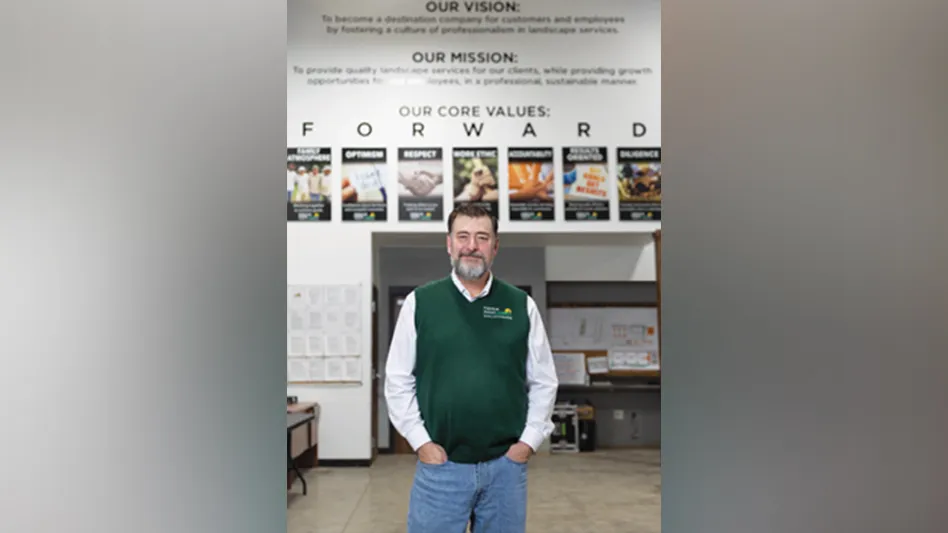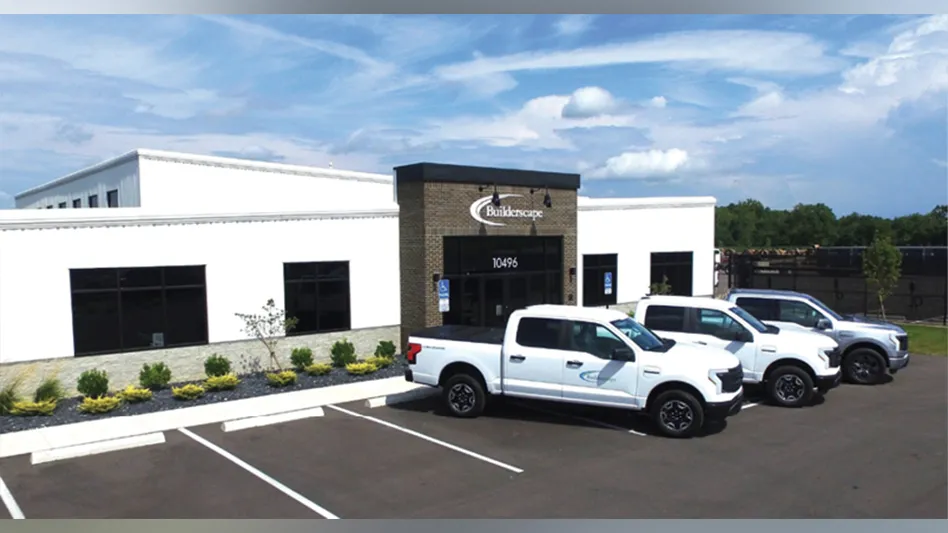
Capturing rainwater was a pretty foreign concept in Tampa a few years ago when Kelby Reed, president of Rainscapes Environmental Solutions, decided to make a spectacle to educate the community. During the drought in 2008, when no one was allowed to turn on their garden hoses or irrigation systems, Reed designed three landscapes that featured elaborate fountains, front and center. And those fountains were spouting, spraying and trickling coveted water for all to see.
“The best way to raise interest is to make some noise,” says Reed. During that no-water time, residents in the area were being ticketed for letting the water flow in their yards – and Reed’s fountains, a landscape luxury, appeared to be a complete abuse of the no-water regulations. A few of his clients were ticketed, and Reed helped them contest the charges.
You see, Reed wasn’t tapping into the municipal water supply to feed those fancy features. In fact, he had designed rainwater capture systems that collected and repurposed water.
“I let myself get ticketed and we never shut off the fountains even though we were told to on a daily basis,” Reed says, defending the source of his water. Still, from curbside view, no one knew those fountains were running off of recycled rain water. All but one ticket was dropped, and Reed paid the $125 fee on the client’s behalf. His customers were happy to oblige by running their eco-friendly fountains to prove a point. “These projects started to raise awareness on rainwater capturing,” Reed says.
News stations wanted a piece of this story, too.
“The water features were running during the day and I was able to raise eyebrows and get interest,” Reed says.
Using rainwater collection systems also allowed Reed to continue his passion: designing and installing intricate, extensive water features. Rather than taking “no water” for an answer, he found a way to make his designs work while respecting limited natural resources – for instance, a severe lack of water because of drought.
Since 2008, the idea of sustainable landscapes and harvesting rainwater has floated into the mainstream, mainly riding the wave of homeowners’ increased desire to have conscientious landscapes. Reed’s firm has been right there all along.
“In Florida, landscape companies are a dime a dozen, and we have always tried to separate ourselves from the rest and kept a positive attitude,” says Reed, who was schooled in architecture and spent a decade applying his artistic talent to living structures as a landscape architect at a large company.
Eventually, in 2004, Reed left to start his own business, which was primarily maintenance since he had a non-compete clause and needed to tap into a fresh customer base. He purchased a few small and failing maintenance companies to get his operation started, knowing he eventually would introduce his design/build and water feature specialty. “We established contacts with local [water feature] distributors and, from there, we built our company and the foundation of aiming to do water features while taking on smaller jobs,” he says.
Today, after a name change – the firm started out as Reed’s Landscape and Water Features – and a portfolio of green landscape designs with impressive water features, Rainscapes is a veteran in Tampa’s sustainable landscape and native plant arena.
Showing potential
“If you can show someone what you can do and how you can do it as opposed to just talking, it makes a world of difference,” Reed says of using pinnacle projects as a launch pad for his business. Case in point: an extensive landscape job in a high-profile neighborhood traveled by local celebrities.
“I finally found a customer who loved the idea of building an entirely sustainable project,” Reed says of the homeowners, who lived in a prestigious golf course neighborhood. Plus, they loved the idea of a coy pond. They wanted to capture rainwater to use for filling and maintaining the pond. They were interested in a significant rainwater collection system.
So Reed started to make job signs explaining exactly what his crews were doing every day on that property, and that got passersby talking. “We really capitalized on where we were and what we were doing,” he says. “Instead of signs that just said ‘Rainscapes,’ we put out a sign that said, ‘Currently collecting rainwater,’ or ‘Changing the landscape environment one step at a time.’”
Every week Reed created a new sign.
Neighbors called, or they picked up one of Reed’s business cards. This job helped elevate Reed’s clientele, but more importantly, it gave him that key portfolio project he needed to define himself in the sustainable landscape market. He had the knowledge, the skill, the creative drive – he just needed that “wow” work to show off so other homeowners could see the potential and fall in love with it.
“By showing people what we are capable of doing, they can say, ‘I’d like that but maybe a smaller version’ or ‘I want that but two times as large,’” Reed says. “Everyone can talk, but without having a job to show people, they could just be telling a pretty story.”
Reed takes his show-don’t-tell philosophy to the streets in his marketing efforts. His trucks are wrapped with dramatic imagery of completed jobs. “My background is in art and architecture,” Reed says, adding that before his company had those flashy jobs to show off, he created dynamic renderings that were splashed on his trucks. “Now, we are almost like a mobile portfolio,” he says.
Carving a niche
Being different is why Rainscapes is successful, if you ask Reed. His niche is elaborate water features – “I call it artwork,” he says, describing how he models stones so water appears as though it is spilling through walls. He blends nature and hardscape and pushes each design. “We try to incorporate a different feature or theme into every project,” Reed says.
Actually, he feels that landscape contractor is somewhat of a misnomer for his profession. “We’re more creative contractors,” he says of himself and his crew of six.
Reed rewinds back to his days as an architecture student studying Frank Lloyd Wright and others. He gathers inspiration from the unorthodox and albeit crazy way Wright lived. “I almost want to be able to push the envelope like that in the landscape industry,” Reed says. “I want to really elevate the quality of work and change the way we do things.”
To that end, Reed is considering launching an apprenticeship program at his firm. “Like someone did for me, I’d like to teach aspiring landscape architects important skills and show them what they can do to differentiate themselves from the next guy or the next architect or the next landscaper – or whatever it is they want to do,” Reed says.
He envisions a program that enables apprentices to choose a discipline, from landscape lighting to masonry. “Maybe one day I’ll end up working for them – I have no idea,” Reed says.
Still, Reed has his eyes on what’s next. “I’m in the infantile stages of where we are going to be as a firm in the next couple of years,” he says. “The times have changed. It’s a different green industry. As long as you have the patience and talent and can sustain [the business] … it’s all up to us.”
This story is one of three that appeared in Lawn & Landscape's Business Builder e-newsletter. To continue reading about Rainscapes Environmental Solutions:
Real green: It takes more than a name to show off what your business does.
Generating boom in a bust market: Even in a down economy, homeowners are investing in outdoor projects.





